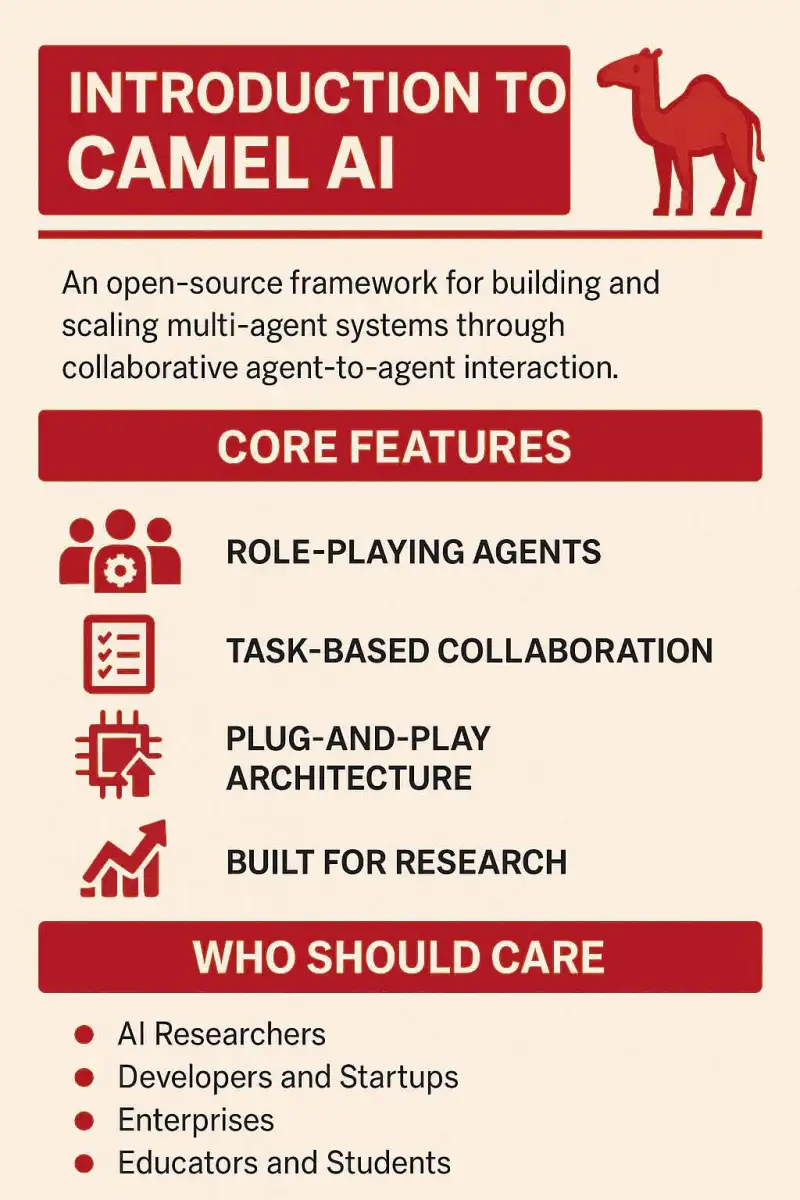
Introduction to Camel AI - Revolutionizing Multi-Agent Systems
Camel AI - Revolutionizing Multi-Agent Systems
Among the latest and most promising frameworks in this space is Camel AI — an open-source project that is already being hailed as "the best multi-agent framework".
If you're curious about how AI agents can collaborate, reason, and scale effectively, then Camel AI is something you should definitely explore.
What is Camel AI?
Camel AI (Collaborative Agents for Multi-Agent Learning) is an innovative multi-agent framework that focuses on agent-to-agent interaction. It's designed to simulate how multiple AI agents can collaborate, negotiate, and solve complex tasks together — without constant human intervention.
It’s not just another AI framework. Camel AI brings forward the concept of scaling laws for agents — meaning it studies and optimizes how increasing the number of agents impacts the performance, efficiency, and intelligence of the system.
The project is open-source and available on GitHub, inviting researchers, developers, and AI enthusiasts to contribute, experiment, and innovate.
Why Camel AI Matters
While traditional AI models focus on single-agent optimization (think ChatGPT answering your questions), Camel AI pushes the boundaries by exploring how multiple agents can communicate and collaborate to achieve better results.
Some key highlights:
- Multi-Agent Conversations: Agents can talk to each other, exchange ideas, negotiate, and come to conclusions collectively.
- Scaling Research: It studies how performance improves as you add more agents, helping researchers understand the optimal number and configuration of agents for different tasks.
- Open and Extensible: Since it’s open-source, you can customize agents, tasks, and environments to fit your research or business needs.
- Real-World Simulation: It moves closer to how humans interact in teams, making it a strong candidate for simulating complex environments like economics, politics, gaming, and enterprise collaboration.
Core Features
- Role-Playing Agents: You can define specific roles for each agent (e.g., developer, designer, manager) and simulate real-world team dynamics.
- Task-Based Collaboration: Agents can work together to complete complex tasks more efficiently than a single agent could.
- Plug-and-Play Architecture: Easy to plug in different types of agents, including language models like GPTs.
- Built for Research: Comes with tools and configurations to help run experiments, collect results, and analyze the scaling behavior of agents.
Who Should Care About Camel AI?
- AI Researchers: To experiment with collaborative intelligence and agent-based systems.
- Developers and Startups: To build smarter, more autonomous AI solutions.
- Enterprises: To simulate workflows, optimize team productivity, or create AI-driven decision-making systems.
- Educators and Students: To learn and teach multi-agent system dynamics in a hands-on way.
How to Get Started
You can start exploring Camel AI by visiting their GitHub repository: https://github.com/camel-ai/camel.
The documentation is beginner-friendly and provides examples on setting up agents, configuring environments, and running multi-agent conversations.
Camel AI represents an exciting step toward building collaborative, scalable, and intelligent AI systems. Whether you’re into cutting-edge research or looking to develop practical applications, Camel AI opens up new possibilities for what AI agents can achieve together.




